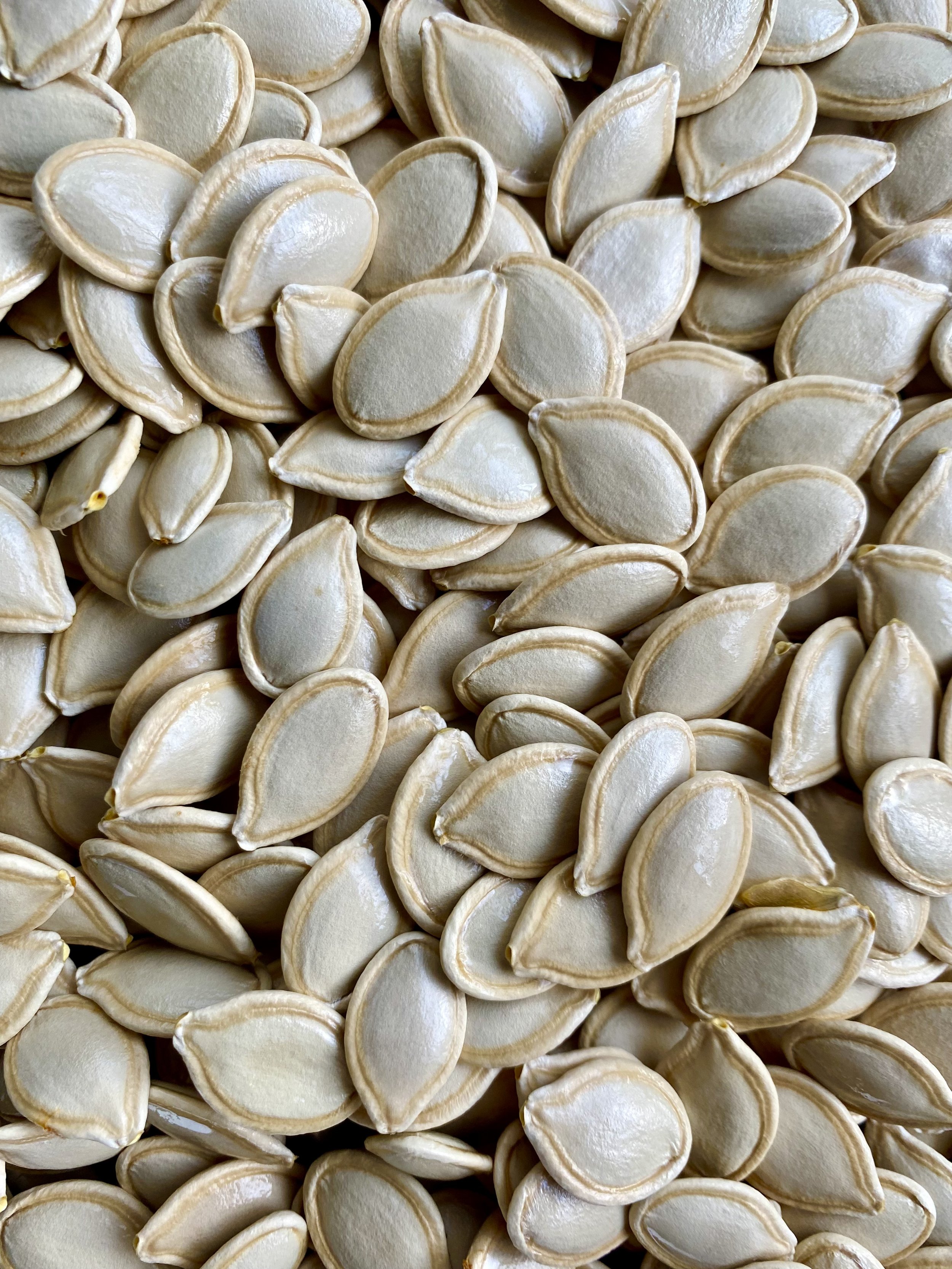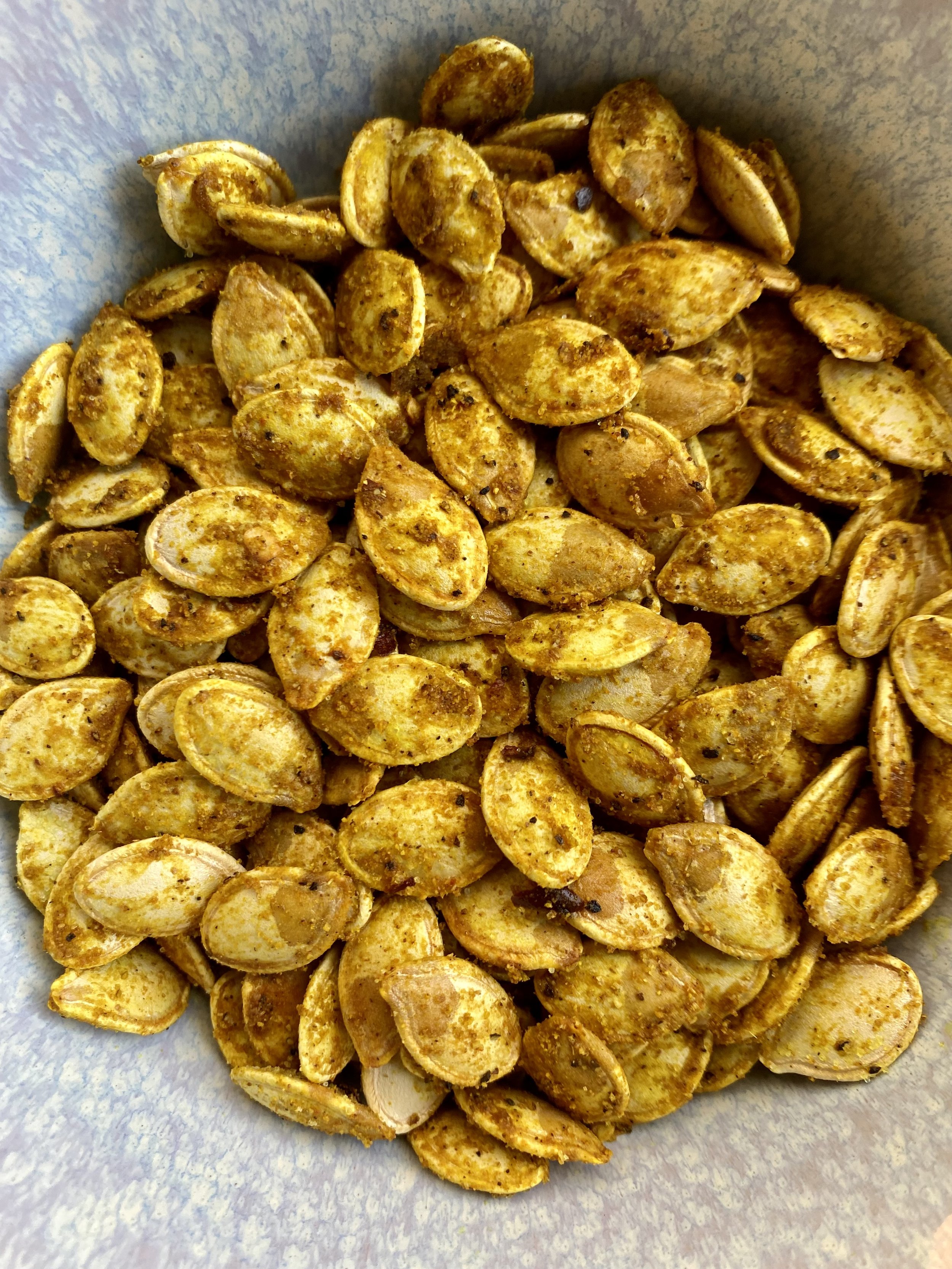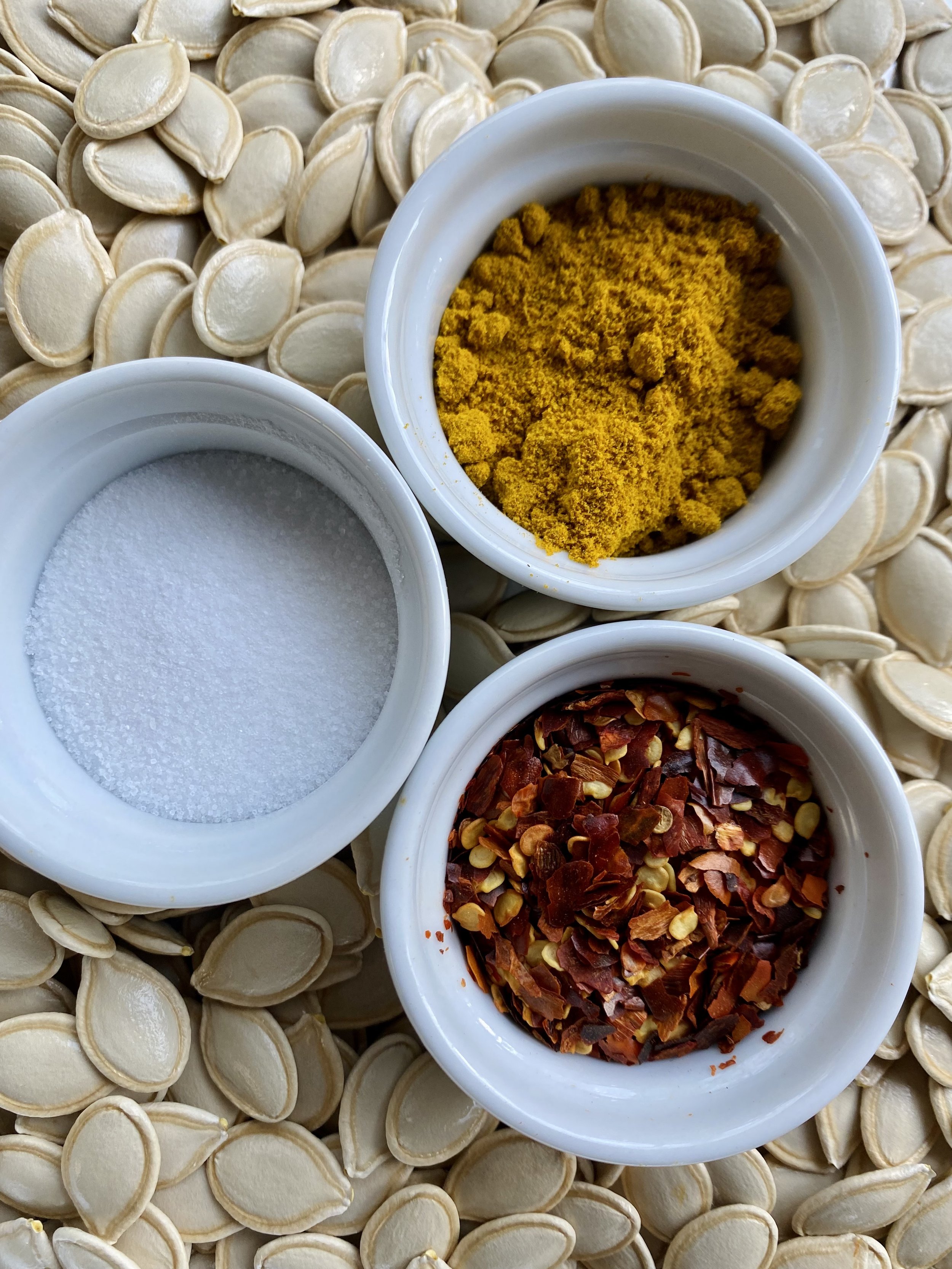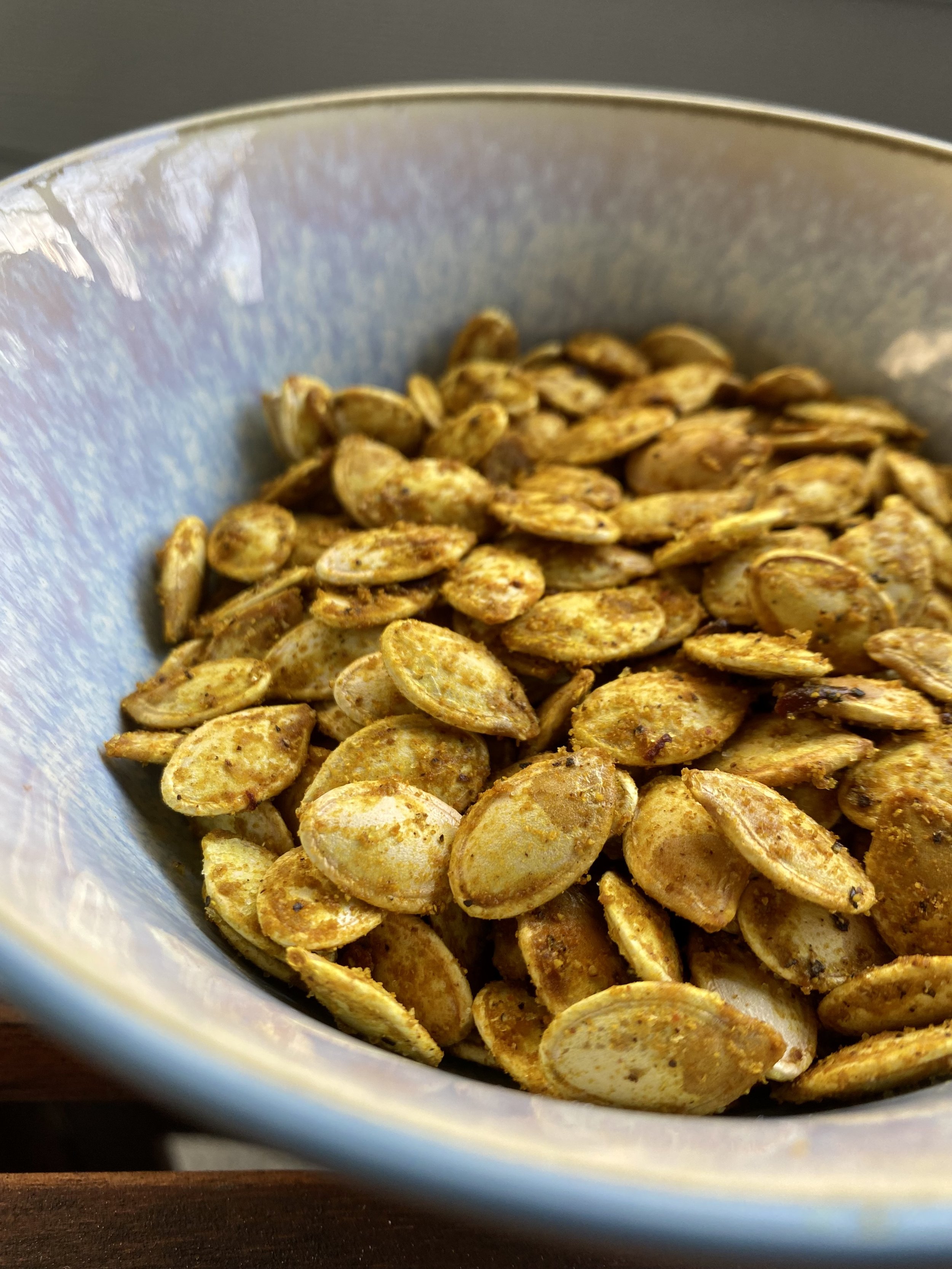Roasted Pumpkin Seeds
The Three Sisters growing method was used for centuries by Indigenous Americans and is a brilliant example of how deep observation of the world around us and listening to the symbiotic nature of our environment can promote human growth and health. For those unfamiliar, the Three Sisters is the practice of growing corn, beans and pumpkins all in one plot together. The corn shoots up fast and provides stability for the beans that wind up their stalks. The beans fix nitrogen in the soil for the other plants to consume, and the pumpkins spread out their wide leaves to block weeds from getting sunlight. In addition to being a cultivation trio that works beautifully together, the combined nutritional qualities of these three foods in our diet is a fully rounded out plate. The corn provides essential carbohydrates, the beans are a great source of protein and the pumpkin provides even more carbs and essential vitamins. But unlike the other two foods, pumpkins are hiding another hidden gem within — pumpkin seeds. They pack a punch of extra protein and healthy oils!
For many of us, we only eat pumpkins in the fall, and only interact with pumpkin outside of the can during Halloween. Every year, more than 1 billion pounds of pumpkin get tossed out and left to rot in America’s landfills. Some are thrown away the day after Halloween, contributing to the 30.3 million tons of annual food waste in the U.S. When left to decompose in a landfill, that food waste produces methane, which is much more potent than carbon dioxide in our atmosphere. If you’re going to carve a pumpkin make sure you can find a place to compost it once it’s starting to look tired. Also, while jack-o-lantern pumpkins are bred more for their size than their flavor, unlike those we use to make pies, their seeds are still delicious for eating and can be one of the ways to #UseItUp during your halloween festivities.
Roasted pumpkin seeds are not only a great way to reduce food waste, but an absolutely delicious seasonal snack. Cooking up in just 20 minutes, I am obsessed with roasting pumpkin (or any other squash) seeds. Honestly, these are so tasty they usually don’t last more than a day or two in our household. Read on for a few different options for ways to spice your seeds. I promise this will become just one more reason to look forward to this season!
Ingredients
Time: 25 minutes
Curry Pumpkin Seeds:
1 cup of pumpkin seeds
1 tablespoon curry powder
1 teaspoon salt
½ teaspoon pepper
Dash of chili pepper flakes
1 tablespoon olive or avocado oil
These are my absolute favorite and the flavor profile that started it all! I had some of these from a small store in Jackson Hole, Wyoming and was immediately hooked.
Sweet and Salty Seeds:
1 cup of pumpkin seeds
1 tablespoon sugar
1 teaspoon cinnamon
½ teaspoon nutmeg (optional)
A little salt
1 tablespoon olive or avocado oil
Spicy Seeds:
1 cup of pumpkin seeds
1 teaspoon salt
½ teaspoon pepper
1 teaspoon pepper flakes
1 teaspoon cayenne pepper
1 tablespoon olive or avocado oil
Preparation:
Remove seeds from the flesh of the pumpkin and wash in a colander. This can be a bit of a sticky and slimy process but it can be fun and festive around halloween!
Spread out the seeds on a cloth and let dry.
Preheat the oven to 350 degrees F.
Mix dried seeds in a bowl with oil and spices. I gave measurements for this recipe but it’s really more like “a dash of this and a sprinkle of that” and should be adjusted for whatever you feel like. When in doubt, add more spices!
Spread mixed seeds across a baking sheet and place in the oven.
Roast for 20 minutes.
Remove from the oven and let cool. For savory seeds I often add an extra sprinkle of salt at this point to give them that fun salty snackability. Enjoy!
Best Practices:
As always:
Try to bring your own reusable bags when you go shopping for these ingredients, and choose grocery stores or markets that are engaged in their community.
Choose storage containers that will help you make the most of your leftovers!
Opt for buying baking ingredients in bulk whenever possible. This can reduce plastic packaging and save money as well.
These ingredients have been chosen with several things in mind:
This recipe can be adjusted to use whatever fruit you have on hand or what is most in season. Eating seasonally can reduce the impact of your food.
This recipe is easily made vegan. Opting for plant-based foods whenever possible reduces your carbon footprint significantly. Even if you are not vegan full-time, going plant-based for as many meals as possible can have a large impact.
Did you enjoy this recipe? Let us know! If you really loved it, share it on social media and tag us (@groundedgrub), or, better yet, share it with your friends and family!





